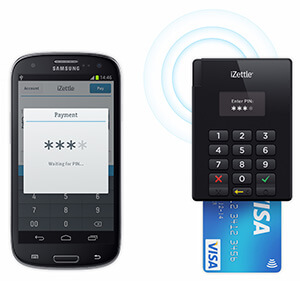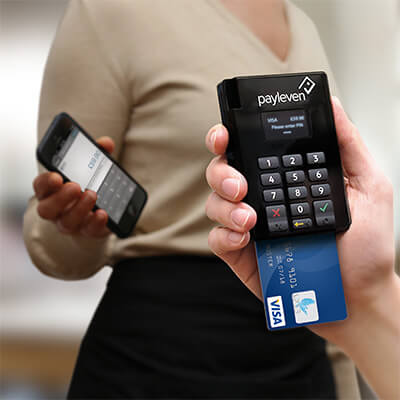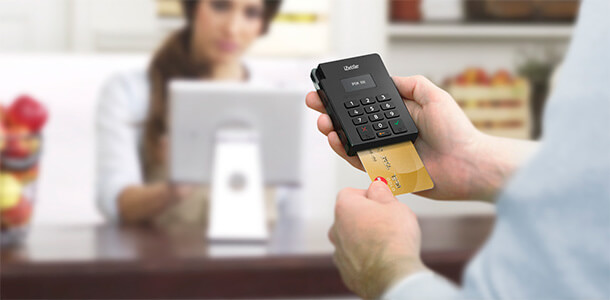iZettle and other Point of Sale Applications: Helping UK Entrepreneurship
The ever changing face of technology is giving a helping hand to the thousands of people in the UK who have discovered their entrepreneurial spirit and decided to set up their own business. Increasing entrepreneurship is also a key goal of the UK Government’s entrepreneurship strategy, and it hopes to add to the 30,000 new enterprises that were launched over the last two years by making additional funding available for the New Enterprise Allowance and Start-up Loans scheme.
New opportunities with smartphones and tablets
The advent of smartphones and tablet devices has created not only a larger potential marketing channel for companies and service providers, but also new payment methods such as SMS payments, NFC payments, mobile billing and other micropayment systems. However, these new billing and SMS payment methods are just half of the story; many developers have been working on systems to enable iPhones and Android smartphones to be turned into card readers at Point of Sale (POS). iZettle and Payleven are excellent examples of this new trend.
Mobile payment and micropayment systems in the UK
While the uptake of mobile payment systems has been slow in the UK to date, all this is set to change in the coming few months with the launch in 2014 of two major new mobile payment schemes. The first is being implemented by the Payments Council and is a nationwide mobile payment scheme backed by eight of the UK’s financial institutions, while the second is a service called Zapp, which has the support of several leading UK high street retailers and which will also enable smartphone users to pay for goods in store using their phones. These are not to be confused with the micropayment scheme called Payforit, a service backed by all the leading UK mobile network operators, which also lets mobile phone users buy goods and services using their phone and then the transaction is charged to the user’s mobile phone bill or paid from a prepaid balance.
Revolution in Mobile Point of Sale (mPOS) Systems
But now your smartphone can easily also be turned into a mobile Point of Sale (mPOS) reader, allowing businesses of any size to accept card payments. The advantages of these mobile phone card readers are that they are cheap and easy to install, in addition to which they offer quick transfer of funds to small businesses. This is a significant development for SMEs since research into UK

iZettle
Emanating from the new capital of cool, Stockholm, this Swedish firm is definitely leader of the pack when it comes to using your smartphone or tablet as a point of sale device. The company has developed a chip and PIN card reader that connects wirelessly to the mobile device you are using and it accepts all major credit cards, which are then authorized by the customer who must enter their PIN number on the card reader. This innovative company also has a unique sliding commission rate that offers the cheapest fees of as low as 1.5% once sales reach a certain monthly level. (Read our detailed iZettle review.)
Payleven
Payleven was founded in 2012 and similar to iZettle has a Chip and PIN card reader that connects using Bluetooth to your mobile phone or tablet. The process is similar too and after you enter the amount into your device, the customer needs to enter a payment card into the reader and type in thecorrect PIN and voila the transaction is complete. The Payleven system charges a fee of

SumUp
SumUp has a slightly different system but in a bold move recently slashed the price of its transaction fees to make it the lowest in the UK at the moment, charging just 1.95% for all card transactions. The system works in a slightly different way for MasterCard and Visa payments. Merchants use a mobile card reader that is connected to the device using the audio jack and when making purchases with a MasterCard, customers sign for the goods. With Visa payments a text message and link is sent to the customer’s phone.
Read this more detailed comparison between iZettle, Payleven and SumUp.
Intuit Pay
Intuit Pay was launched nationally in the UK in March 2013 and in addition to the new Intuit Pay service the company offers a range of other financial management products and services. A chip and PIN card reader is available from the company although customers of Intuit Pay can also make payments using a computer as well as over the phone. The transaction fee is the same as Payleven i.e. a 2.75%.
PayPal Here
Not wanting to miss out on the action, PayPal, which has an established reputation for enabling payments as well as money to be transferred online, has come up with its own Paypal Here app and Chip & PIN card reader. The app has various additional features and the transaction fee is similarly set at 2.75%, although payments where the magnetic stripe has to be swiped or the card details are entered manually are subject to a fee of 3.40% plus 20p.
There are other providers of similar services such as WorldPay Zinc, Sum Up, and mPowa and all operate on a similar principle using chip and PIN readers. The important issue for SMEs is how to get a reliable service at the lowest cost to maximize revenues.

